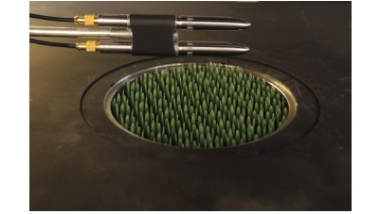Mitigating the propagation of low frequency noise in ducted flows represents a challenging task since wall treatments have often limited dimensions. Micro-perforated panels have been successfully used backed by a cavity constituting a bulk-reacting resonator or in combination with honeycomb for a locally-reacting system. In this work, a cost-efficient methodology for the study and characterization of the aero-acoustic properties of flush-mounted micro-perforated resonators has been developed. Although Laser Doppler Velocimetry is a non-intrusive technique, it requires delicate instrumentation to obtain an estimation of the acoustic velocity and pressure fluctuations at several points over a wall liner. Here, the attenuation has been estimated from sound pressure level measurements performed with two nosecone microphones positioned along a vertical line centered on the resonator axis. Experiments have been performed in a wind tunnel in presence of a low-speed turbulent boundary layer of air fully developed over different samples made up of micro-perforated sheets or porous materials with surface roughness. The micro-perforates have been flush-mounted over a cylindrical cavity of depth 30 mm situated on the floor of the test section. The ability of bulk-reacting resonators for reducing the acoustic or flow-induced noise has been assessed in comparison with locally-reacting treatments.


